|
|
Jean Martinon (Conductor, Composer) |
|
Born: January 10, 1910 - Lyon, France
Died: March 1, 1976 - Paris, France |
|
The significant French conductor and compose, (Jean Franisque-Étienne Martinon, studied violin at the Lyons Conservatoire (1924-1925), and at the Paris Conservatoire with Jules Boucherit (1926-1929), winning the premier pnx. He subsequently took lessons in composition with Albert Roussel, in harmony with Vincent d'Indy and in conducting with Charles Munch and Roger Desormière; obtained his M.A. degree in Arts from the Sorbone in 1932.
Until the outbreak of World War II, Jean Martinon was primarily a composer. His early substantial works include a Symphoniette for piano, percussion, and strings (1935); Symphony No. 1 (1936); Concerto giocoso for violin and orchestra (1937); and a wind quintet (1938). At the start of the war he was drafted into the French army. Taken prisoner in 1940, he passed the next two years in a Nazi labor camp. There, he wrote Stalag IX (Musique d'exil), an orchestral piece incorporating elements of jazz. During his internment, he also composed several works of a religious nature, including Absolve, Domine for male chorus and orchestra orchestra (without violins) in memory of French musicians killed in the war, and Psalm 136 (Chant des captifs), the latter receiving a composition prize from the city of Paris in 1946.
After his release, Jean Martinon appeared as a conductor with the Pasdeloup Orchestra in Paris (1943). Then he was conductor of the Bordeaux Symphony Orchestra (1943-1945), assistant conductor of the Orchestre de la Société des Concerts du Conservatoire de Paris (1944-1946), and associate conductor of the London Philharmonic Orchestra (1947-1949). After conducting the Radio Eireann Orchestra (RTÉ National Symphony Orchestra) in Dublin (1948-1950), he was artistic director of the Lamoureux Orchestra in Paris (1950-1957). Although Martinon devoted as much time as he could to composing in the early postwar years - producing a string quartet (1946), an "Irish" Symphony (1948), the ballet Ambohimanga (1946), and the opera Hécube (1949-1954) - he was increasingly occupied with conducting. He toured as a guest conductor as well, and made his American debut with the Boston Symphony Orchestra on March 29, 1957, conducting the USA. premiere of his Symphony No. 2. He was Artistic Director of the Israel Philharmonic Orchestra (1957-1959) and Generalmusikdirektor of the Düsseldorfer Symphoniker (1960-1966).
In 1963, Jean Martinon was succeeded Fritz Reiner as Music Director of the Chicago Symphony Orchestra. During the 5 years of his tenure, he conducted about 60 works by American and European composers of the modern school, and made a number of outstanding LPís for RCA, mostly of bracing 20th century repertoire in audiophile sound. He directed the Chicago Symphony Orchestra away from the Germanic in favour of the French style that was more fluid than bold. Martinon conducted a series of contemporary concerts, funded by the Rockefeller Foundation, at the University of Chicago, and he also led a Baroque music festival. During the Orchestraís 75th anniversary season (1965-1966), he presented several world premieres, including his own Symphony No. 4 (Altitudes). His progressive policy met opposition from some influential people in Chicago Society and in the press, and he resigned in 1968.
Jean Martinon jumped at the chance to take the post of Chief Conductor of the Orchestre National de la Radio Television Française in Paris in 1968; working with this ensemble, he recorded almost the entire standard French repertory for Erato and EMI. His earlier Erato efforts that focused on such secondary but nevertheless interesting figures as Albert Roussel, Pierné, and Dukas, whereas EMI assigned him integral sets of Camille Saint-Saënsí symphonies and the orchestral works of Debussy and Ravel, among other projects. In 1974, he was appointed Principal Conductor of the Residentie Orkest Den Haag, but he died before that relationship could bear much fruit.
Jean Martinon's repertoire focused on the works of the early 20th century French and Russian masters. He became best known for his idiomatic performances of the French repertoire. In the words of one of his biographers, conductor Jean Martinon's performances "were distinguished by a concern for translucent orchestral textures, and sustained by a subtle sense of rhythm and phrasing." Occasionally, "he stressed a poetic inflection at the expense of literal accuracy." He was a National Patron of Delta Omicron, an international professional music fraternity.
Jean Martinon resumed his career as a composer around 1960, writing his Violin Concerto No. 2 (1960) for Henryk Szeryng, his Cello Concerto (1964) for Pierre Fournier, and his Symphony No. 4 (Altitudes), composed in 1965, for the 75th anniversary of the Chicago Symphony Orchestra. He acknowledged Prokofiev and Béla Bartók as strong influences on his scores, which meld Expressionism with French Neoclassicism, and are euphonious in their modernity and expansive in their Romantic elan. Martinon continued composing into the 1970ís, but he seldom recorded any of his own music, with the notable exceptions of the Second Symphony, "Hymne à la vie" (ORTF, for Barclay Inedits) and Fourth Symphony, Altitudes (Chicago Symphony Orchestra, for RCA). Among his compositions are four symphonies, four concertos, additional choral works and chamber music.
Jean Martinon was diagnosed with bone cancer, not long after he guest conducted the San Francisco Symphony Orchestra in their first complete performances of Deryck Cooke's orchestration of Gustav Mahler's 10th Symphony. He died in Paris. |
|
Works |
|
Dramatic: Opera:
Hécube, after Euripides (1949-1954; 1st scenic performance, Strasbourg, November 10, 1956)
Ballet:
Ambohimanga ou La Cité bleue (1946; Paris, 1947)
Orchestral:
Symphony No. 1 (1934-1936; Paris, March 1940)
Symphony No.2, Hymne à la vie (1942-1944; Paris, February 13, 1944)
Symphony No.3, Irlandaise (Radio Eirean, Dublin, 1949)
Symphony No.4, Altitudes (Chicago, December 30, 1965)
Symphoniette for Strings, Piano, Harp & Percussion (1935; Paris, May 30, 1938)
Violin Concerto No.1, Concerto giocoso (1937-1942)
Violin Concerto No.2 (1958; SelIe, Bavaria, May 28, 1961)
Musique d'exil ou Stalag IX, musical reminiscence of imprisonment (1941; Paris, January 11, 1942)
Divertissement (1941)
Obsession for Chamber Orchestra (1942)
Romance bleue, rhapsody for Violin & Orchestra (1942)
Concerto lyrique for String Quartet & Chamber Orchestra (1944; transcribed as Concerto for 4 Saxophones & Chamber Orchestra in 1974)
Overture for a Greek Tragedy (1949; prelude to the 2nd act of Hécube)
Symphonies de voyages (1957)
Introduction and Toccata (1959; orchestration of the piano piece Prelude and Toccata)
Cello Concerto (1963; Hamburg, January 25, 1965)
Le Cène (1962-1963)
Hymne, Variations et Rondo(1967; Paris, Febuary 15, 1969)
Flute Concerto (1970-1971)
Sonata movimento perpetuo (1973)
Chamber:
Sonatina No. 1 for Violin & Piano (1935)
Sonatina No. 2 for Violin & Piano (1936)
Sonatina No.3 for Piano (1940)
Sonatina No.4 for Wind Trio (1940)
Sonatina No.5 for Solo Violin (1942)
Sonatina No. 6 for Solo Violin (1958)
SNo. 7 for Flute & Piano (1958)
Domenon for Wind Quintet (1939)
String Trio (1943)
Suite nocturne for Violin & Piano (1944)
Piano Trio (1945)
Scherzo for Violin & Piano (1945)
2 String Quartets (1946; 1963-1966)
Prelude and Toccata for Piano (1947)
Duo for Violin & Piano (1953)
Introduzione, Adagio et Passacaille for 13 Instruments (1967)
Vigentuor for 20 Instruments (1969)
Octet (1969)
Vocal:
Absolve Domine for Men's Chorus & Orchestra (1940; performed at Stalag IX prison camp, November 2, 1940)
Appel de parfums for Narrator, Men's or Mixed Chorus & Orchestra (1940)
Psalm 136 (Chant de captift) for Narrator, Soloists, Chorus & Orchestra (1942)
Ode au Soleil né de la Mort for Narrator, Chorus & Orchestra (1945)
Le Lis de Sharon, oratorio (1951; Tel Aviv, 1952)
Songs |
|
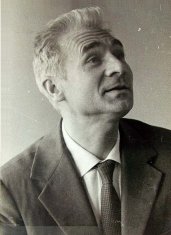
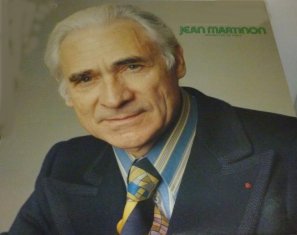
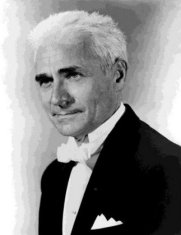
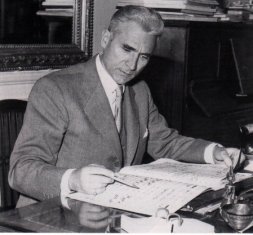
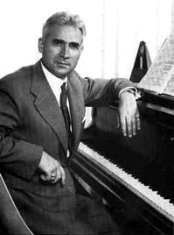
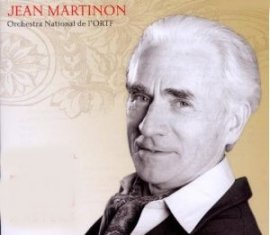
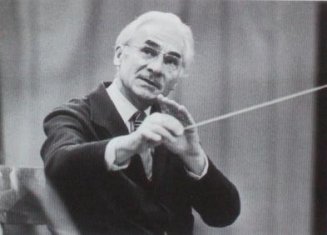
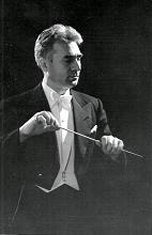
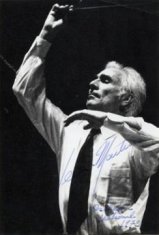
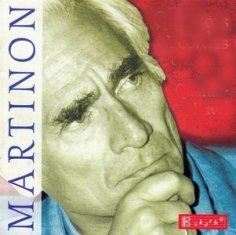
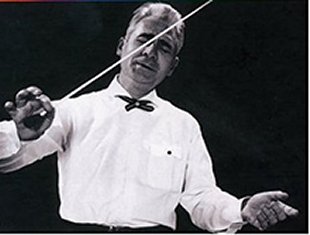
|
|
Sources:
Bakerís Biographical Dictionary of 20th Century Classical Musicians (1997)
Wikipedia Website (April 2012)
All Music Guide Website (Author: James Reel)
Contributed by Aryeh Oron (June 2012) |
|
Jean Martinon : Short Biography | Bach Discography: Recordings of Vocal Works |
|
Links to other Sites |
|
Jean Martinon (Wikipedia)
Music Directors: Jean Martinon (Chicago Symphony Orchestra) [PDF]
Jean Martinon - Biography (AMG) |
|
|